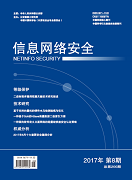In the current cyberspace, vulnerability has been attracted the widespread attention. Although source-code-oriented vulnerability analysis has made significant progress and has the characteristics of rich semantic, but many commercial software exists in the form of binary code in practical application. Therefore, binary-executable-oriented vulnerability discovery is more meaningful and useful. This paper first briefly introduces the typical binary vulnerability analysis framework. Based on the existing research work, this paper puts forward the whole idea of the research on the vulnerability discovery technology of binary program in the future, and then makes some research on some key points and key technologies respectively. Firstly, this paper briefly introduces the research on the key technologies of binary-executable-oriented background and significance of the intermediate language. Secondly, according to the three key technologies of taint analysis, symbolic execution and fuzzing, this paper introduces the basic principles and classification standards, processing flow, research situation and existing problems, respectively, and finally gives a simple summary. In this paper, a brief study of the binary program vulnerability discovery technology is given, which is helpful to carry out the follow-up research work.

